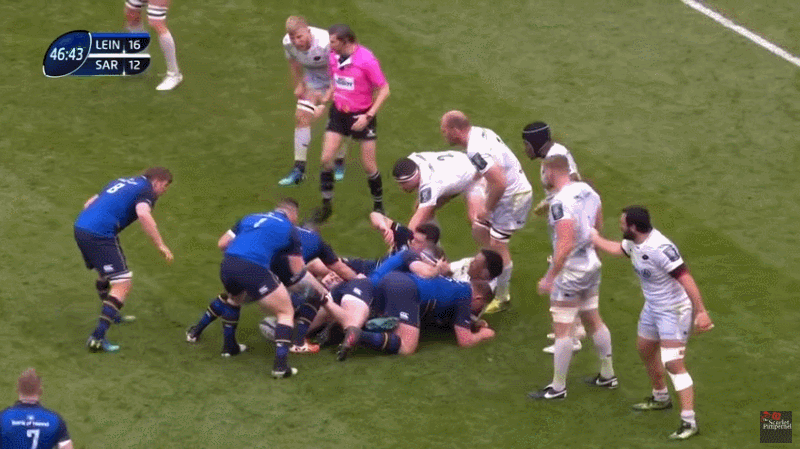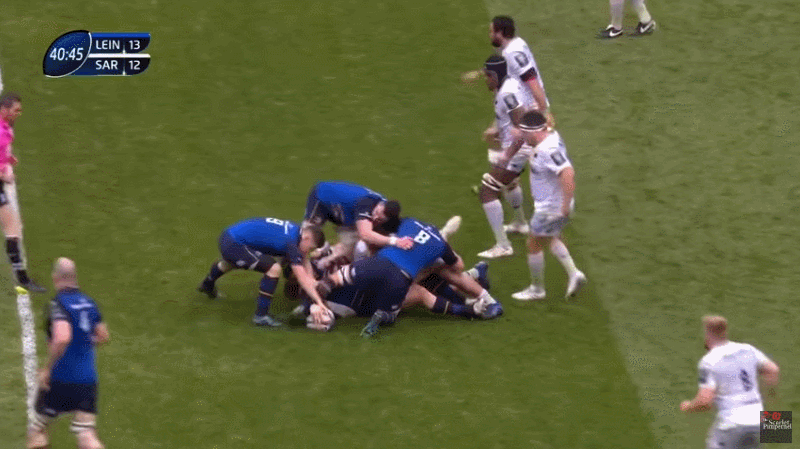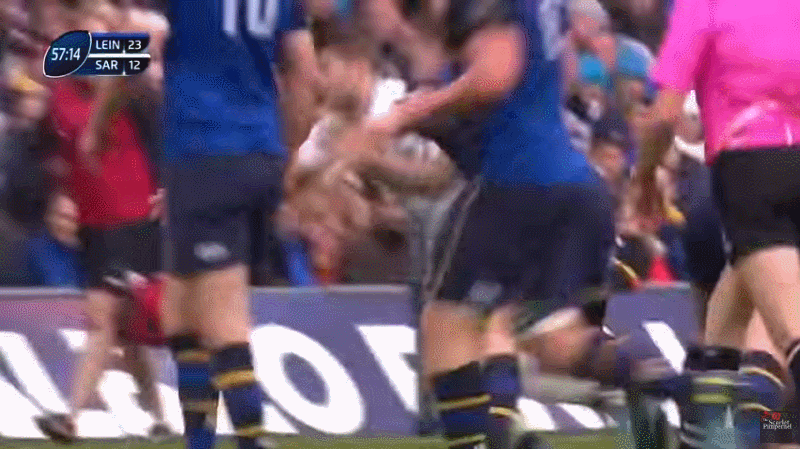Leinster have a chance of achieving greatness.
The reigning European champions will pull clear of Toulouse and achieve an unprecedented fifth star if they can beat Saracens in the Heineken Champions Cup final in Newcastle this weekend.
They have a chance at doing the double-double and defending both their PRO14 and European crowns and yet bookmakers have installed Leo Cullen’s side as slight underdogs. It’s a remarkable shift from where both of these sides were just over a year ago when Leinster smashed Saracens in a quarter-final in Dublin.
Leinster cruised to a 30-19 win that day after leading by as much as 18 points at one stage in what was one of their best performances of a historic campaign that yielded both PRO14 and Champions Cup victories.
Saracens look to be a much better side this term, and with a combined 88 points scored in knockout wins over Glasgow and Munster, the numbers certainly support that, but they still shipped 30 points to Leinster the last time these two sides met.
Tries to Garry Ringrose, Dan Leavy and James Lowe set up a comfortable win for the four-time champions but how did they work those scores? How did they break down the best defence in England last season?
Quick ball and offloading
Quick ball and effective offloading is a good strategy for any team in rugby but Leinster did such a brilliant job at controlling their ruck in possession last year and finding willing support runners once they sent the ball wide.

Here Jordi Murphy does a great job of isolating the pillar defender and offloading to the support runner before Sean Cronin gets quick ball from the ensuing ruck, not letting the defence set.
When Cronin is brought to ground, the ball is clean and scrum-half Luke McGrath does a good job of getting it out to the backline who spread the Saracens defence before Ringrose pins the ball down into the corner.
Leinster clearly identified Saracens ruck defence as an area that could be exposed because second-row James Ryan and flanker Dan Leavy combined just a few minutes later to catch the Sarries defenders napping in the lead up to the latter’s try.

Leinster’s inside balls kept the Saracens defence honest last season but Leinster also did a brilliant job of stretching the visitors defence.
Quick ball and testing the Sarries forwards around the fringes naturally forced Mark McCall’s side to commit numbers around the ruck and once Leinster were able to suck in a few defenders they were then able to push it wide and get their gamebreakers in one-on-one situations.
The lead up to Garry Ringrose’s opening try was actually very simple but a good example of just how quickly this team can take it all the way.
Rob Kearney retrieved the high ball, took possession into contact and formed a ruck but it was the width of Leinster’s backs that stretched the defence.
The passes were executed well and James Lowe managed to make his man miss but one offload in the second level and Leinster were away to the races.

Again, later in the game, Leinster enjoyed some good success when they were able to shift the ball into the wider channels.
Johnny Sexton is the primary playmaker for the champions and naturally a lot of the attack flows through him but even by having some runners towards the touchline forces the Saracens defence to make a decision and here we can see Sean Maitland hold his line and then turn his back on the ball, allowing Rob Kearney to accelerate through the hole.

Leinster enjoyed great success down the channels and again the formula is fairly simple given the caliber of players they have; work the phases through the middle, try and get quick ball down the edge and look for the mismatch.
In the lead up to James Lowe’s final try, Sexton was able to find some daylight after a nice carry by James Ryan.
The ball is very quick from McGrath at the base of the ruck and with Garry Ringrose on the outside and Johnny Sexton on his inside, Jordi Murphy makes the right play and finds his fly-half who in turn hits Jack McGrath in stride.
A few phases later and Leinster have scored their third try and effectively killed the game off.

Leinster played one of their best games of the season when these sides met last year and yet there was nothing overly complicated about their play.
They cleaned out extremely well which allowed them to generate quick ball. They attacked the fringes of the ruck and used their forwards not only to clean out, but also as receivers for offloads and when they did generate momentum and went to the backs they played with exceptional width and alignment and either stretched the defence or forced defenders into the wrong reads.
As James Ryan said, they played their brand of rugby.
“We just played Leinster rugby. Our attack was really good, we had loads of variety in it. It was unpredictable and that’s what we need to be. When you come up against a defence as good as Saracens, you can be anything but predictable against a team like that. Playing Leinster rugby, expressing ourselves and backing ourselves is what it’s going to take.
“It’s kind of getting that balance, isn’t it? It’s something that Leo and Stuart have driven a lot in the last couple of years, everyone has to be comfortable on the ball. Everyone has to be a ball player and when you get 15 guys that like carrying and like getting on the ball, it makes your attack much more dangerous.”














































